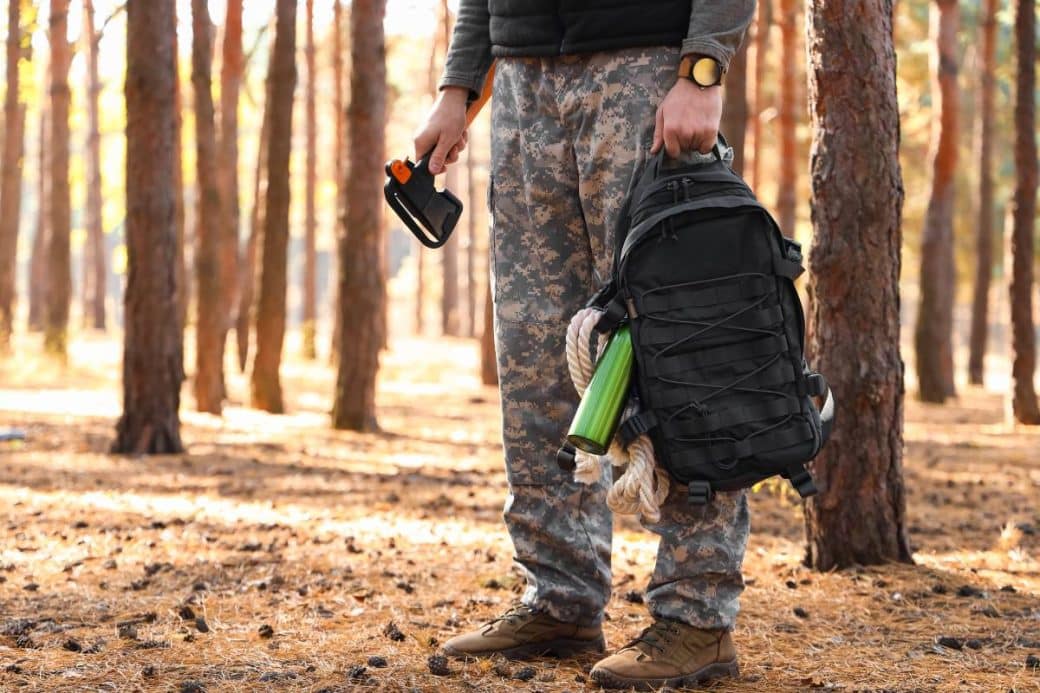Step into the shoes of an experienced outdoors enthusiast as you embark on a thrilling journey through the wilderness. In this first-person account of navigating and orienteering, you will gain valuable insights and practical tips that will help you conquer even the most challenging terrains. From using a compass and map to utilizing modern technology, this article offers a comprehensive guide to mastering the art of wilderness navigation. With vivid descriptions and expert advice, prepare to unravel the mysteries of the great outdoors and discover the true meaning of self-reliance and adventure.

Introduction
Are you someone who craves adventure and the great outdoors? Have you ever found yourself in unfamiliar terrain, unsure of how to find your way back or navigate to your destination? If so, mastering the skills of navigating and orienteering can significantly enhance your outdoor experience and provide you with the self-sufficiency and safety you need. In this article, we will delve into the world of wilderness skills, exploring the history, importance, and techniques of navigating and orienteering. Whether you’re a seasoned outdoor enthusiast or a beginner looking to embark on thrilling adventures, this comprehensive guide has got you covered.
What is Navigating and Orienteering?
Definition
Navigating and orienteering are terms that refer to the ability to find one’s way in the wilderness, typically without the use of modern technology such as GPS. It involves the use of various skills, techniques, and tools to determine your location, orient yourself, and plan a route to your desired destination.
History
The art of navigating and orienteering has been an essential skill for survival and exploration throughout history. From ancient seafarers using the stars to guide their ships to early explorers relying on old-fashioned maps and compasses, humans have always found ways to navigate the wild. Today, while technology has made navigation more convenient, the traditional skills of navigating and orienteering still hold immense value and provide a deeper connection with nature.
The Importance of Mastering Wilderness Skills
Self-sufficiency in the Outdoors
Mastering wilderness skills, including navigating and orienteering, is crucial for developing self-sufficiency in the great outdoors. When you can confidently find your way without relying on external aids, you become less dependent on others and increase your ability to tackle unforeseen challenges. The freedom and empowerment that come from self-sufficiency are invaluable, allowing you to explore the wilderness with confidence and tranquility.
Safety
Safety should always be a top priority when venturing into the wilderness. By mastering wilderness skills, you equip yourself with the knowledge and tools to ensure your safety. Navigating and orienteering skills enable you to stay on track, avoid dangerous terrain, and plan escape routes if necessary. Whether you’re hiking, backpacking, or engaging in other outdoor activities, these skills can be the difference between a safe and enjoyable experience and a dangerous situation.
Connection with Nature
In today’s fast-paced, technology-driven world, it’s easy to become disconnected from nature. Mastering wilderness skills like navigating and orienteering allows you to immerse yourself in the beauty of the natural world, forging a deeper connection with your surroundings. By relying on traditional methods of navigation, you’ll learn to observe and understand the environment around you, fostering a sense of appreciation and respect for the natural world.

Preparing for Outdoor Adventures
Choosing the Right Gear
Before embarking on any outdoor adventure, it’s essential to choose the right gear. This includes selecting appropriate clothing, footwear, and equipment based on the environment and weather conditions you’ll be facing. It’s crucial to invest in high-quality, durable items that will withstand the rigors of the wilderness and facilitate your navigation. Additionally, be sure to pack a reliable map and compass, as these will be your primary tools for navigating.
Packing Essentials
When preparing for outdoor adventures, it’s vital to pack the essentials to ensure your safety and comfort. These may include items such as food, water, a first aid kit, emergency shelter, and tools for fire-making. Carrying enough supplies to sustain you throughout your journey is crucial, as unexpected circumstances can arise and leave you stranded.
Physical Fitness
Outdoor adventures often require physical exertion, so it’s important to prioritize your fitness level. Regular exercise, including cardiovascular, strength, and endurance training, will improve your stamina and allow you to navigate challenging terrain with ease. Engaging in activities such as hiking, jogging, or cycling can help prepare your body for the physical demands of the wilderness.
Understanding Maps and Compasses
Types of Maps
Maps are an essential tool for navigating the wilderness. There are several types of maps available, including topographic maps, trail maps, and road maps, each serving a specific purpose. Topographic maps, in particular, provide detailed information about the terrain, elevation, and physical features of an area, making them ideal for wilderness navigation.
Map Reading Skills
To effectively navigate using a map, it’s important to develop map reading skills. This involves understanding symbols, scales, contour lines, and other key elements of a map. By learning to interpret this information, you’ll be able to identify landmarks, determine your location, and plan your route accurately.
Working with a Compass
A compass is a valuable tool that complements map reading. It helps determine direction and orient yourself in relation to your surroundings. By combining the information from your map with the compass, you can navigate more precisely. Learning how to use a compass properly, including reading bearings, setting a course, and adjusting for declination, will greatly enhance your navigating abilities.
Navigating with Natural Landmarks
Recognizing Terrain Features
The wilderness is brimming with natural features that can serve as navigational landmarks. Learning to recognize these terrain features, such as rivers, mountains, valleys, and distinctive rock formations, can help you orient yourself and stay on track. By studying maps and observing the environment, you can train your eyes to spot these landmarks, providing valuable reference points for navigation.
Using Sun and Stars for Direction
When modern technology fails or is unavailable, the sun and stars can come to your rescue. They have long been used by navigators to determine direction, with the sun serving as a reliable reference during the day and stars guiding the way at night. By understanding how to read the position of the sun and stars in relation to the time and location, you can determine your direction and navigate accurately.
Techniques for Orienteering
Using Pace Counting
Pace counting is a technique that involves measuring the distance you cover with each step. By knowing your average pace and counting the number of steps taken, you can estimate the distance traveled and navigate accordingly. This technique is especially useful when terrain or other factors make it challenging to rely solely on maps and compasses.
Triangulation
Triangulation is a method that involves using three reference points to determine your exact location. By measuring the angles between these points and using basic geometry, you can pinpoint your position on a map. Triangulation is a powerful technique for navigating in areas where landmarks are visible but maps may be less detailed.
Dead Reckoning
Dead reckoning is a technique that involves estimating your position based on a previously known location and the distance and direction traveled since then. By keeping track of your movements and making adjustments for factors like terrain and wind, you can maintain a reasonably accurate estimate of your position. Dead reckoning is useful when navigating through featureless or confusing terrain.
Navigating in Challenging Environments
Navigating in Dense Forests
Dense forests present unique challenges for navigation, as landmarks may be obscured and visibility is limited. To navigate effectively in such environments, it’s essential to rely on your map and compass, as well as other techniques like using sound cues, following animal trails, or using natural openings in the canopy to gain perspective. Patience, attentiveness, and adaptability are key when navigating through dense forests.
Finding Direction in Deserts
Navigating in deserts can be particularly challenging due to the absence of prominent landmarks and vast stretches of seemingly indistinguishable terrain. To find direction in deserts, it’s crucial to closely observe subtle changes in the landscape, such as wind patterns, sand dunes, and the position of the sun. Additionally, skills like pace counting and dead reckoning become essential tools for ensuring you stay on track in these arid environments.
Navigating through Mountains
Mountainous terrain can be both breathtaking and treacherous, demanding careful navigation. To navigate through mountains, it’s important to understand contour lines on your map, as they provide essential information about elevation changes and slope steepness. Utilizing features like ridgelines, peaks, and valleys can help guide your route. However, it’s crucial to exercise caution, as mountain weather and conditions can change rapidly.
Survival Skills in the Wilderness
Finding Water Sources
Access to clean drinking water is essential for survival in the wilderness. Navigating to water sources, such as rivers, streams, or natural springs, is crucial. By studying maps and observing the environment for signs of water, such as vegetation or animal activity, you can increase your chances of finding these life-sustaining sources.
Building Shelter
In the wilderness, having a shelter to protect yourself from the elements is crucial. Navigating to suitable locations for shelter, such as areas with natural cover or terrain features that provide protection, is essential. By understanding the environment and utilizing available resources, you can build a shelter that provides warmth, protection, and comfort.
Fire Making
Fire is not only a source of warmth and light but also a valuable tool for cooking food, purifying water, and signaling for help. Navigating to areas with suitable fire-making materials, such as dry wood and tinder, is essential. Additionally, understanding fire safety principles and practicing proper fire-building techniques will ensure you can start and maintain a fire when needed.
The Thrill of Navigating and Orienteering
Building Confidence and Independence
Mastering the skills of navigating and orienteering in the wilderness instills a sense of confidence and independence. Knowing that you can rely on yourself to navigate and find your way opens up a world of possibilities. This newfound confidence can extend beyond the wilderness, empowering you in various aspects of life.
Exploring Remote and Untouched Places
Navigating and orienteering allow you to explore remote and untouched places that may not be easily accessible by conventional means. By venturing off the beaten path, you can experience the tranquility and beauty of nature while discovering hidden gems that others may never see. The ability to navigate gives you the freedom to create your own adventures and forge unforgettable experiences.
Discovering Hidden Gems
One of the most rewarding aspects of navigating and orienteering is the opportunity to stumble upon hidden gems in the wilderness. Whether it’s a hidden waterfall, a secluded beach, or a breathtaking viewpoint, these hidden gems are the rewards of your navigation skills. They provide a sense of awe and wonder, reminding you of the beauty and magic that await those who choose to master the wilderness.
In conclusion, mastering the skills of navigating and orienteering is not only essential for self-sufficiency and safety in the wilderness but also a gateway to thrilling adventures and a deeper connection with nature. By understanding the history, importance, and techniques associated with these skills, you can embark on unforgettable journeys with confidence, independence, and a thirst for exploration. So pack your gear, hone your skills, and set off on an expedition into the wild, where every step becomes a testament to your mastery of the wilderness.

